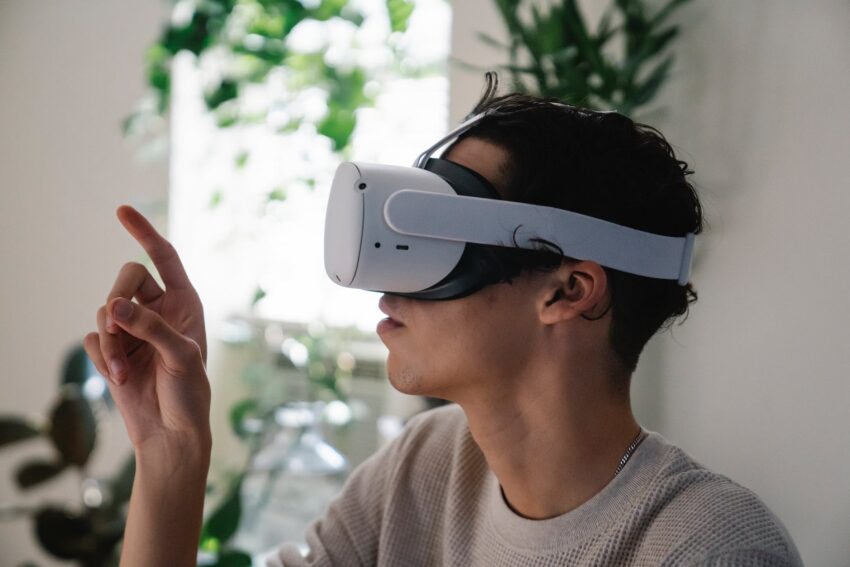Video Game physics
The world of video game physics is a perfect example of a realm where imagination knows no bounds. From epic battles to gravity-defying stunts, video game physics is at the core of creating captivating virtual experiences. In this guide, we will delve into the intricate mechanics behind video game physics, exploring how developers bring the laws of nature and logic to life within digital landscapes.

Particle Simulation
Particle simulation is a key aspect of video game physics that creates an immersive gaming experience. It involves simulating the behavior of individual particles, such as dust, smoke, or fire, in real-time to create a realistic and dynamic environment. With particle simulation, game developers can create complex visual effects that make the game world feel more alive and interactive, including the use of a particle system for procedural animation.
This technology has come a long way since its early days. And it also continues to evolve with each new game release. Whether you’re playing a first-person shooter or a racing game, particle simulation is an essential component of modern video game physics.
Projectiles
Projectiles are an essential element of video game physics. They are objects that move through the air and interact with other objects in the game world. Projectiles can be used for a variety of purposes, such as attacking enemies or solving puzzles. The physics of projectiles in video games can vary greatly. Depending on the game engine and the type of game being played.
Developers have to consider factors like gravity, wind speed, air resistance, and particle physics when designing projectile mechanics for their games. Properly implemented projectile physics, such as those described by Newton’s laws of motion, can provide players with a more immersive gaming experience.
Gravity Glitches
Gravity glitches are a fascinating phenomenon in video game physics that can sometimes result in unexpected and amusing situations. These glitches occur when the game engine’s calculations for gravity go awry, leading to characters or objects defying the natural laws of physics. Players may witness characters floating in mid-air, objects falling through floors, or even experiencing sudden changes in fine line of gravity direction.
While these glitches may be unintentional, they have become an entertaining part of gaming culture. Players often capture and share videos of gravity glitches and animation, adding to the humor and camaraderie within the gaming community. One popular game that has gained attention for its humorous glitches is Goat Simulator.
Realism
Realism is a key goal for many game developers when it comes to video game physics and game design. They strive to create a sense of believability and immersion in the virtual worlds they create. Realistic physics can make games feel more enjoyable and satisfying for players.
To achieve realism, developers need to consider various factors such as gravity, momentum, friction, and collision detection. These elements are crucial for making objects and characters in the game world behave as they would in the real world.
Gravity in the Mario Galaxy series
Gravity in the Mario Galaxy series is a great example of how middleware can enhance video game physics and real-life gameplay. The gravity mechanics in these games allow Mario to move around on different celestial bodies. Each with its own gravitational pull and unique environment. This not only adds an element of challenge to the game but also creates a sense of immersion for the player. The use of realistic physics in video games like Mario can make the gameplay more engaging and enjoyable, making it one of the most popular gaming franchises of all time.
Half-Life 2
Half-Life 2 is a video game that has been praised for its physics engine, including its physics simulation. Which provides an immersive and realistic experience for players. The game uses the Havok physics engine to simulate the movement of objects and characters in the game world, allowing for realistic interactions between objects and characters, such as ragdoll physics when enemies are defeated or the weight and acceleration of vehicles.
The physics engine also plays a role in puzzle-solving elements of the game, with players needing to use their understanding of physics to progress through certain areas. Overall, Half-Life 2 showcases the importance of a well-designed physics engine, including physics simulation and acceleration, in creating an engaging and immersive video game experience.
Intuitive Physics in AI and Machine Learning
Intuitive physics in AI and machine learning is a crucial aspect of creating realistic and immersive video game physics. By integrating AI into the game engine, developers can create more lifelike environments and characters that interact with each other in a realistic way. AI can simulate natural movements, gravity, and even weather patterns to make the game world feel more organic. With intuitive physics and the use of virtual reality (VR), players can experience a greater sense of immersion within the game world and enjoy a more engaging gameplay experience.
What is video game physics and how does it work?
Video game physics refers to the simulation of real-world physics within a virtual game environment. It involves algorithms and mathematical models that govern the behavior of objects, such as gravity, collisions, and motion. This creates a realistic and immersive gaming experience for players with game mechanics based on physics-based simulations.
What are the key challenges in creating realistic physics in video games?
Creating realistic physics in video games poses several challenges. These include accurately simulating gravity, collisions, and object interactions. Ensuring smooth and responsive gameplay, optimizing performance on various platforms, and striking a balance between realism and fun gameplay mechanics.
How do game developers incorporate physics engines into their games?
Game developers incorporate physics engines into their games by using libraries or software packages that simulate real-world physics. These engines provide the necessary tools and algorithms to calculate and render realistic movement, collisions, and interactions within the virtual game world.
Can game developers manipulate physics to create unique gaming experiences?
Yes, game developers have the ability to manipulate physics in video games to create unique gaming experiences. By adjusting variables such as gravity, friction, and object behavior. Developers can create realistic or fantastical worlds that enhance gameplay and immersion for players.
Reddit Conclusion
In conclusion, the world of video game physics is a great way for creativity and technology to collide. Game developers continuously push the boundaries of what is possible, bringing virtual worlds to life with realistic physics. From realistic gravity to intricate collision detection, video game physics adds depth and immersion to gaming experiences. So, next time you find yourself immersed in a virtual adventure, take a moment to appreciate the incredible work that goes into creating a seamless and believable gaming experience.
Follo on Instagram.

